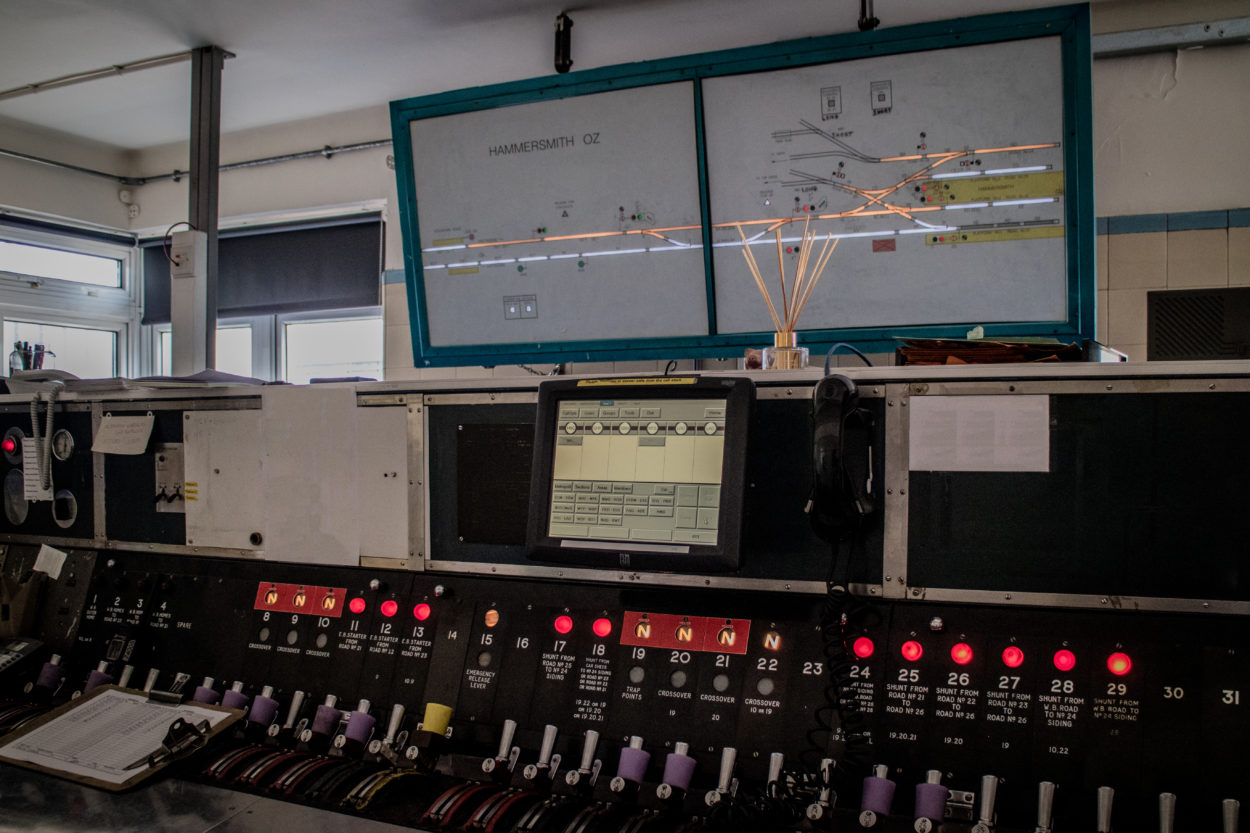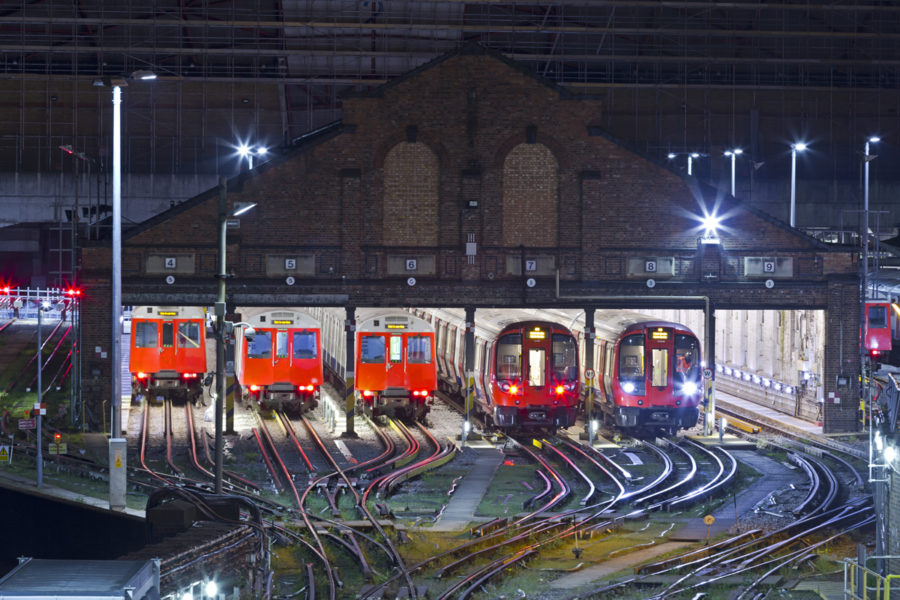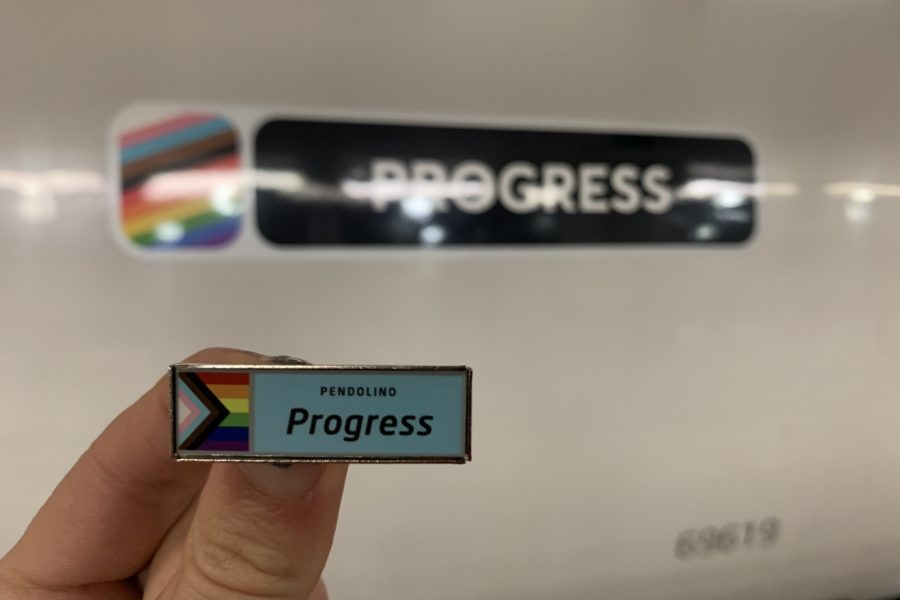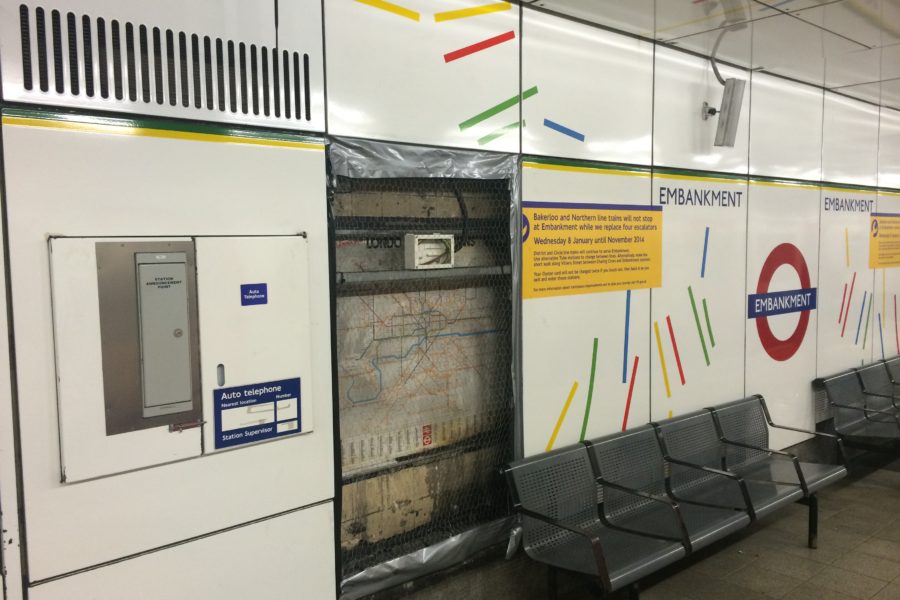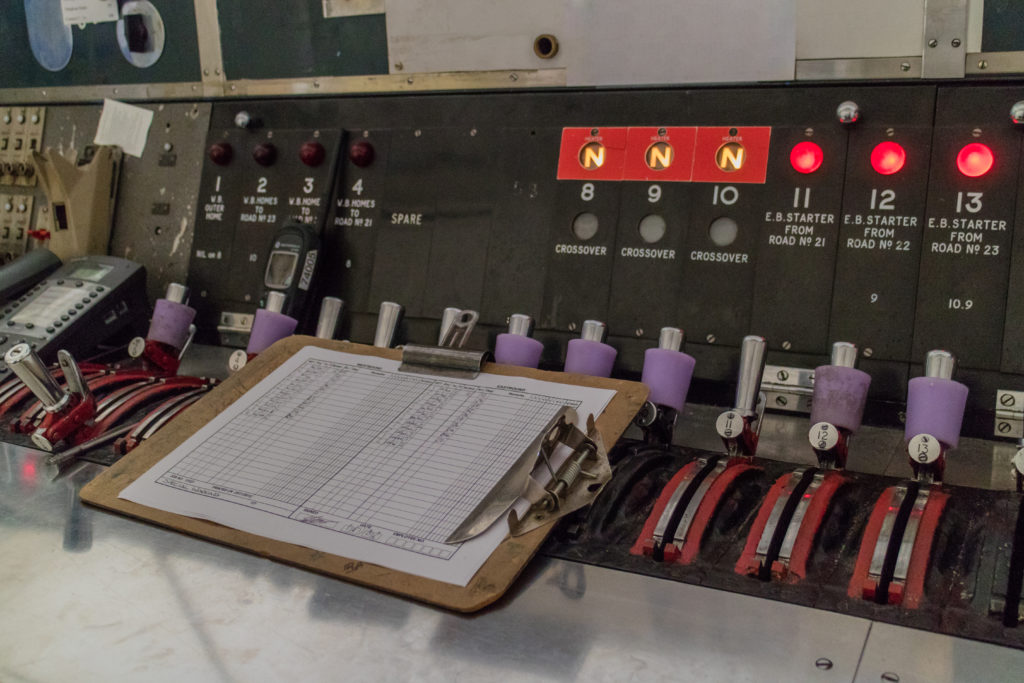
On Sunday 24 June 1951 a brand new signal cabin opened on London’s Underground network. Equipped with a non-descript Westinghouse ‘N’ style power frame to the usual London Transport specification, and designed to a boxy but functional standard, the cabin was nothing special. Despite the presence of a major car depot and goods yard, passenger services were somewhat sparse by wider LT standards, leading to a generally calm and quiet time for the signal operators contained within. The cabin superseded an earlier mechanical frame a short distance away, itself dating back to Edwardian times.
Now, almost 68 years later, Hammersmith OZ signal cabin is about to have its levers replaced to normal for the final time.
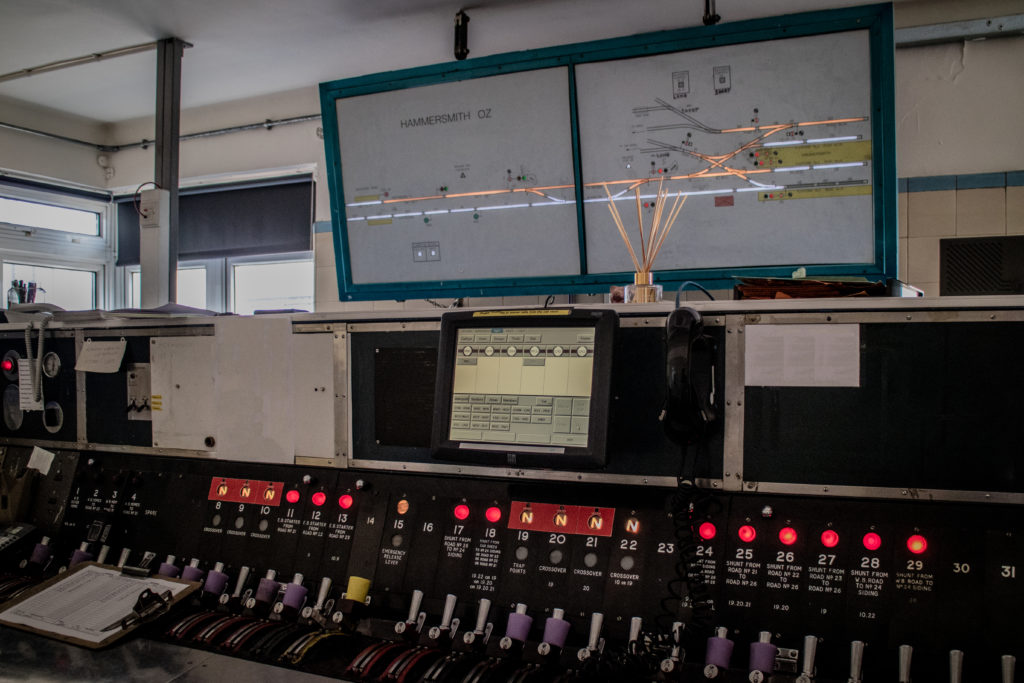
What’s a signal cabin then?
More commonly known as a signal box, a signal cabin is the name given by London Transport to the rooms housing equipment (and people!) to ensure the safe operation of trains along the railway. Signal cabins have been around almost as long as the Underground itself, with six opening with the Metropolitan Railway on 10 January 1863. As the Underground expanded, so too did the number of signal cabins, with one being provided at nearly every station during the early days.
As technology improved, the size of cabins increased but the equipment inside became smaller, allowing cabins to increase their area of control, in turn reducing the expenditure required for staffing purposes. Initially, cabins contained large mechanical levers connected directly to the signals in the tunnels, operated via a system of wires and pulleys. Later, these would give way to electropneumatic systems, featuring miniature levers and requiring much less effort on the part of the operator. These installations were later able to be operated via early computerised systems, often using simple relays and compressed air systems to work the frames, with one person overseeing large swathes of railway and only having to intervene where necessary. The continued maturity of computer technology, and the miniaturisation that accompanies such, has allowed all of these functions to be absorbed almost completely into software, with the physical levers of old being replaced by a computer interface.
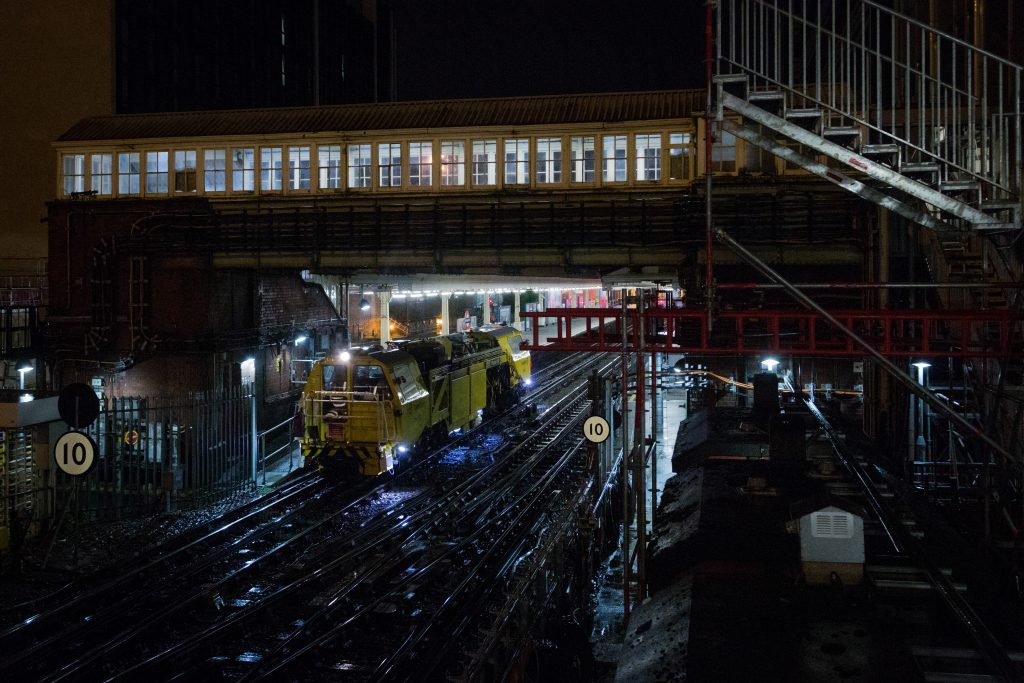
Why is this important? Don’t trains have a driver to keep them running?
It’s true: all trains on the London Underground are staffed by a train operator, who safely controls the train from one station to the next. They also open and close the doors, and are expertly trained to deal with any issues that may arise on the journey. However, the railway is a very different environment to the road: trains on the Underground can operate at a maximum 60mph up to every 90 seconds , and they’re guided by their steel wheels on steel rails so aren’t able to swerve to avoid any obstructions ahead. In the dark, cramped tunnels, it isn’t always possible to see where the next train might be, so a system is required to make sure that a safe distance is maintained. To operate along a different route, trains are required to navigate sets of points, which are also controlled and operated from the signal cabin.
Signals, therefore, have two key functions in a railway environment. They tell the train operator whether or not any points up ahead are safely set for movements across them, and also which route they could be taking, and also ensure that a safe separation is kept between trains. If a signal is red, it means the section beyond it, up to the next signal, is occupied by a train, and that it wouldn’t be safe for another one to continue. Once this section becomes empty, the signal will change to green and the train can carry on its journey. On much of the Underground this all happens automatically (known as ‘automatic’, or ‘auto’ areas), but in certain locations—often, but not always where there are points—the signals have to be manually cleared by an operator. This could be because of that need to change direction, or because it is an area where trains are routinely held to the timetable.
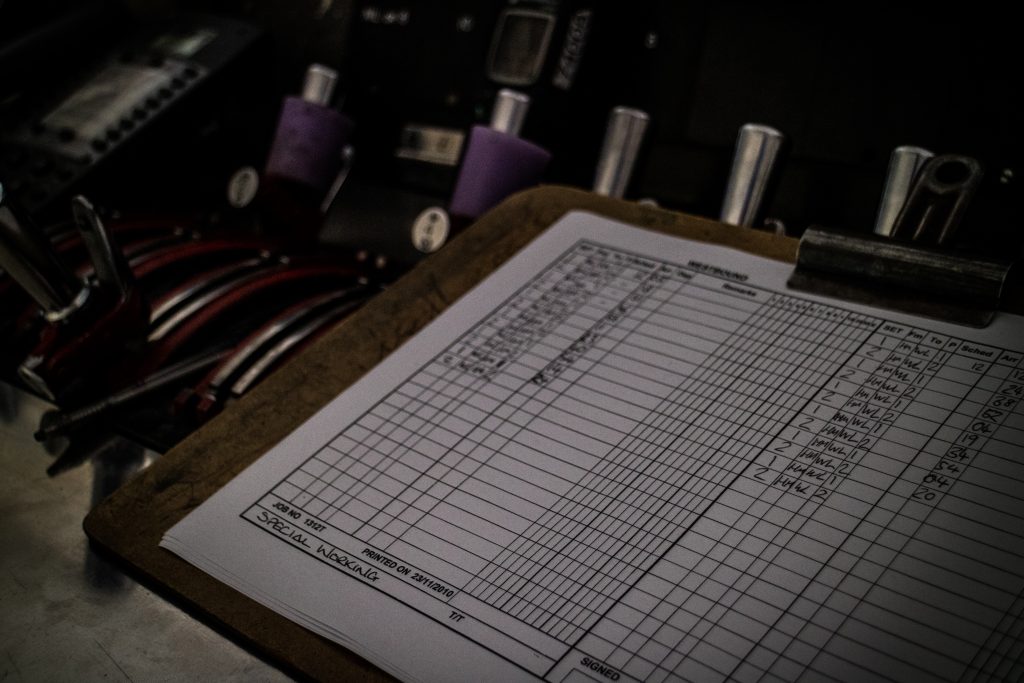
I’m with you. But why is Hammersmith special? Surely the Tube will still have signals tomorrow?
You’re absolutely right. All lines on the Underground—and indeed pretty much every railway across the world—has a signalling system, but these can come in many different shapes and sizes. Hammersmith is one of a dwindling number of ‘miniature lever frames’ not just on London Underground but across the world. Hundreds, if not thousands, of similar devices could be found during the 1950s and 1960s; indeed, London Transport had over 100 similar frames in operation during the heyday of power signalling, each staffed between one and three signal operators—and often a ‘box boy’ to help with other tasks too.
Today, however, just ten frames remain—from tomorrow, that number will drop to nine. In many respects, this is the beginning of the end for traditional signal control on London Underground. Of those nine, only four are operated directly by a human; the remaining five are controlled remotely. All are due to be swept away over the next few years.
With the removal of the frames, the familiar trackside red and green signals will also disappear. That’s not to say that the Tube won’t have signals—far from it: however, instead of being located at intervals along the track, indications as to whether trains can proceed will appear right inside the train operator’s cab, on a console in front of them. A new system, called Communications Based Train Control (or CBTC), is being commissioned as part of the Four Lines Modernisation programme (4LM), which will bring with it the opportunity to increase the frequency of train services as well as faster journey times, over and above those provided by the legacy kit.
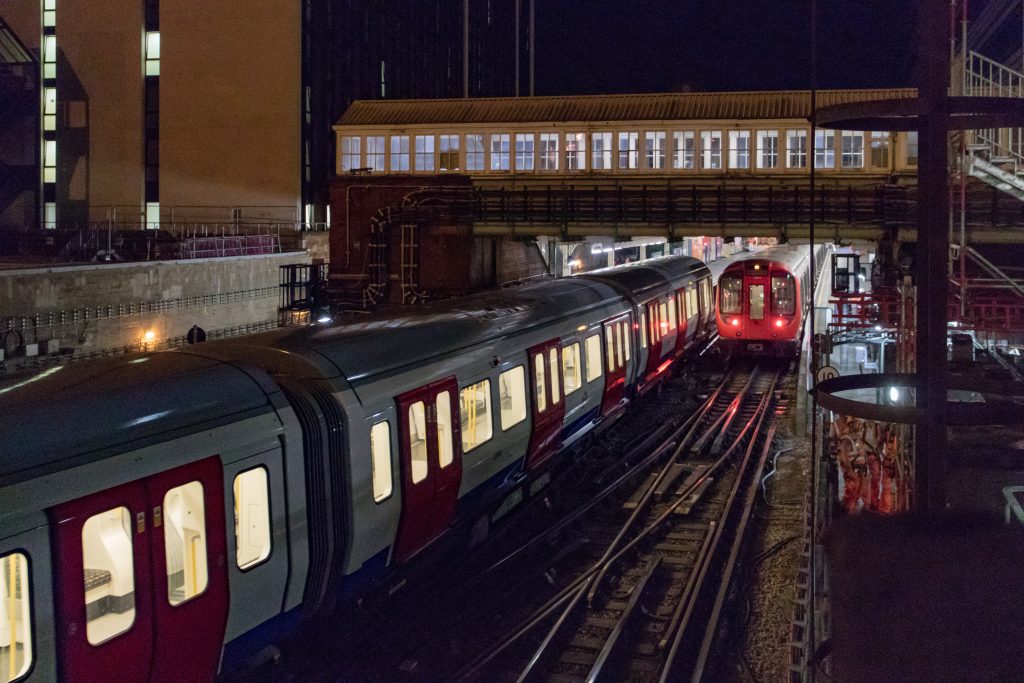
The Last Stroke? Replaced to normal? What are all these fancy terms?
There’s a lot of technical jargon associated with signalling, but we’re not going to go into that too much—after all, this post isn’t concerned with the technicalities of how signalling works!
But there’s also a lot of operational jargon thrown around with the operation of these frames, and it can be hard to grasp some of it without any prior knowledge. So here’s our quick jargon-busting guide to being a London Underground Signal Operator. If we’ve missed anything, drop it in the comments!
- (Lever) Frame – The physical equipment used by an operator to control the movement of trains, via points and signals.
- Stroke / Restroke – The act of operating, or re-operating, a lever within a lever frame
- Normal – the position of levers in the frame when points are in their default position and signals are at danger
- Reverse – the opposite of the above; when a lever has been operated, throwing points to a diverging route or clearing signals to green
- Replaced (to normal) – Moving a lever from the reverse position back to its default normal position
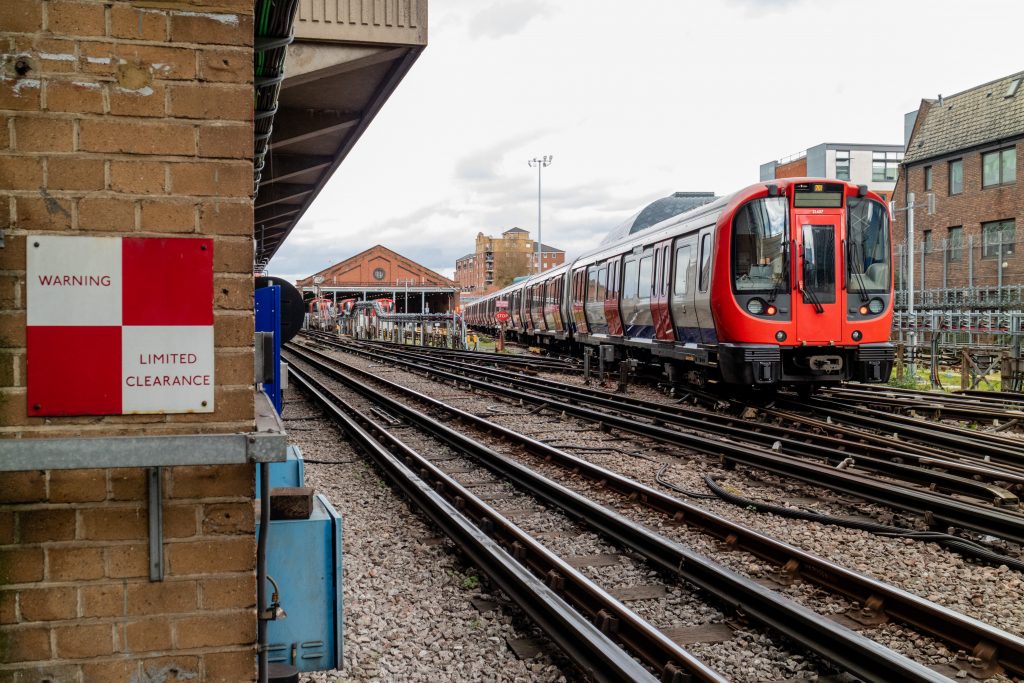
Sounds complicated. Can I see one of these frames in action?
Unfortunately not. Unlike in 2017 when we are all able to go out and #CatchTheD, the lever frames are vital, controlled environments crucial to the safe operation of the railway system. As such, it isn’t possible to see them in action, but if you know what you’re looking for you might be able to grab a glimpse of the external building. There’s also plenty of disused cabins across the Underground, and most follow a similar design. The Central, Northern and Piccadilly lines are particularly good places to ‘cabin spot’!
But, if you want to get up close and personal with a former London Underground frame, then there are plenty of opportunities! The London Transport Museum’s depot at Acton has a number of different styles of frame on static display, which can be viewed during the periodic open days that take place—the next one is in April. A small band of enthusiasts are also working hard to restore the former Epping signal cabin to its former glory, using a frame salvaged from nearby Hainault. They hope to eventually have the frame fully operational and hooked up to a model railway, providing a unique opportunity to learn about the life of a London Underground signal operator. Some heritage railways also have miniature lever frames, such as the Bluebell Railway’s Kingscote box or the Embsay and Bolton Abbey Railway’s Bolton Abbey box.
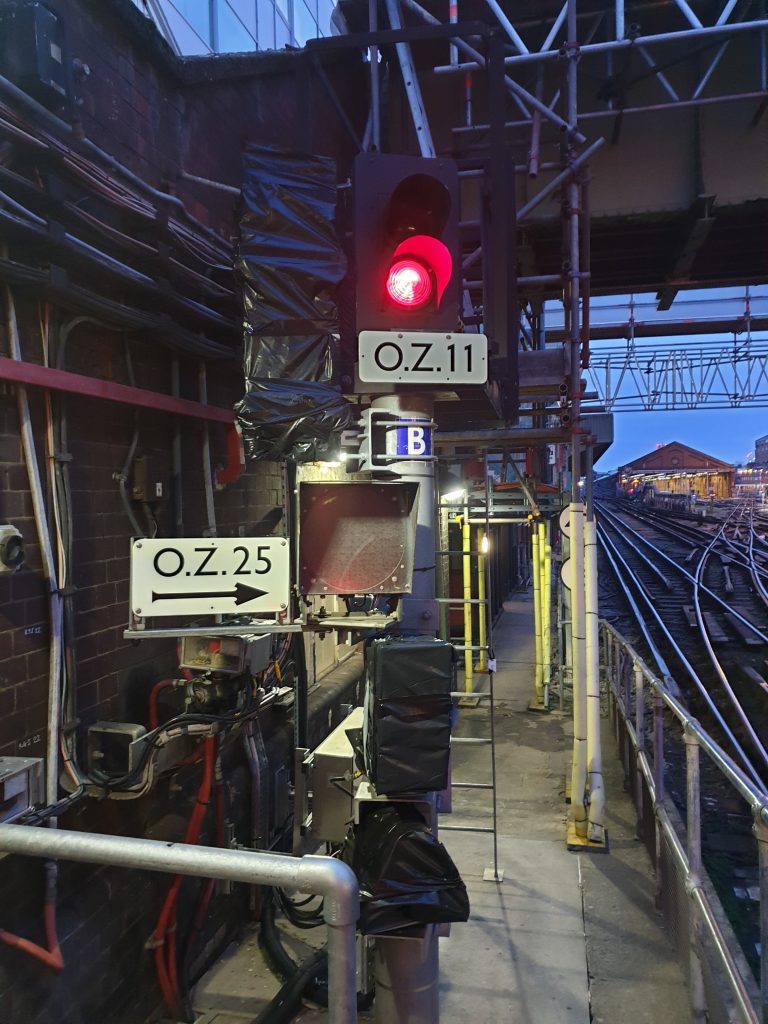
Is there anything I can go and look at today that won’t be there tomorrow?
YES! As already mentioned, the transition to modern computerised signalling will also see the end of colour light signals alongside the railway tracks, and ‘train stop’ equipment situated on the tracks themselves. The train stops are an additional safety mechanism to bring trains to a stop if they pass a signal at danger (red), but this functionality will also be included within the new computerised system. For now, much of this equipment will remain in place, but rather than being fully functional will instead be decommissioned: signals will be bagged over, and train stops pegged down.
The other big change is with the trains themselves. For the first time ever, services on the Hammersmith and City and Circle lines will operate automatically between stations, with the train operator simply pressing two buttons to set the train on its journey. This is very similar to how the Central, Jubilee, Northern and Victoria lines have been operating for a few years, and will eventually spread to the entirety of the ‘Sub Surface Railway’, that is the Circle, District, Hammersmith and City and Metropolitan lines. One particularly noticeable change will be when a train is ready to depart a station: currently the only indication is the signal changing to green, but from tomorrow the trains will show this themselves, with a row of white lights illuminating when the train is good to go. For now, this will only happen between Hammersmith and Latimer Road, but will again spread to the entire SSR in due course.
When can I ride the first automatic train?
Although the new automatic railway will begin on Saturday, it isn’t due to enter full public service until Monday morning. The weekend allows time for final testing and commissioning of the system, and to give staff a chance to get used to the new way of working. That said, we understand a preview service may begin on Sunday afternoon… keep an eye on our Twitter if that’s the case!
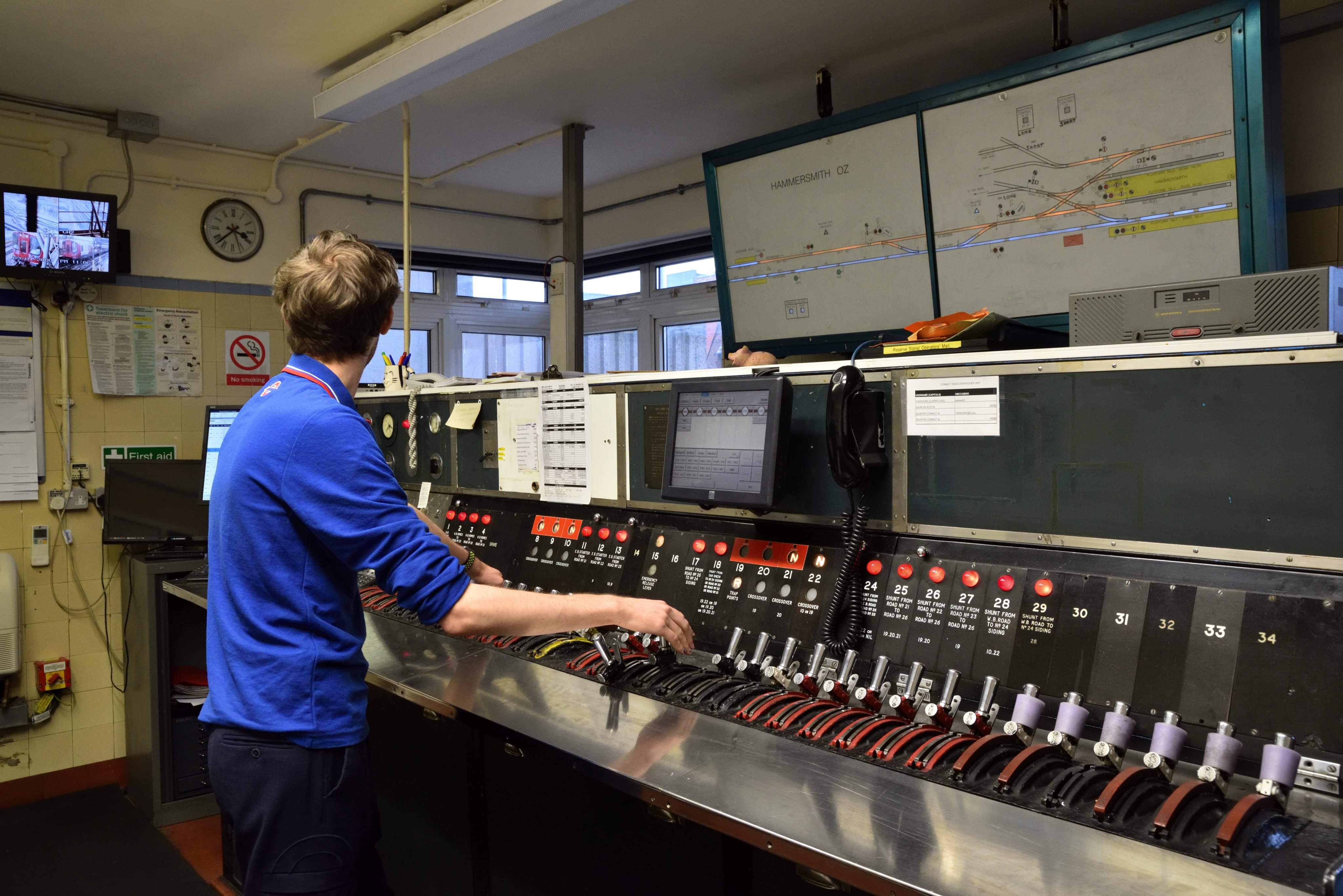
There’s still more cabins to close, though? This isn’t truly “#TheLastStroke”?
Correct—as we’ve mentioned, nine frames will still be in operation after tomorrow. At this stage, only Hammersmith is closing, but we expect the rest to follow in fairly quick succession once the programme begins. It’s the beginning of the end for a dying railway art, and we’ll be sure to post up again when the next closure date is announced.
For now, however, the following traditional lever frame cabins remain in day-to-day operation on the London Underground. We’ve also listed whether or not they are operated directly or remotely, and what type of frame is deployed for the more technically minded! There are broadly two styles in use on LU, but in reality all have their own quirks and differences to suit their environment.
Signal cabin |
Type of frame and operation |
|---|---|
| Ealing Broadway | N2, remote |
| Edgware Road | K, manual |
| Harrow-on-the-Hill | N (PP), manual |
| Harrow (North) | N2, remote |
| Harrow (South) | N2, remote |
| Liverpool Street | B, remote |
| Rickmansworth | N, manual |
| West Kensington (East) | N, remote |
| Whitechapel | N, manual |
When is the last stroke happening, then?
The last manually signalled passenger train will arrive into Hammersmith at 0034 tonight, before running into the nearby sidings and stabling at around 0045. The last passenger train from Hammersmith to Edgware Road will depart at 0029. In theory it will be possible to do both of these by travelling to Goldhawk Road and back, but we wouldn’t recommend it, just in case things don’t quite run to time.
As for the last manually signalled passenger train on London Underground, that’s still to be determined. It’s likely to be another few years before the 4LM programme works its way out to the extremities of the network, and it is likely that the cabin at Rickmansworth will be the last to close. After this time a handful of slightly more modern ‘push button’ cabins will remain, but they too will all disappear under 4LM. At that stage, all signal control on London Underground will be operated from centralised control rooms, bringing the curtain down on over 150 years of localised control and marking the end of the traditional signal operator.
Hammersmith OZ Signal Cabin
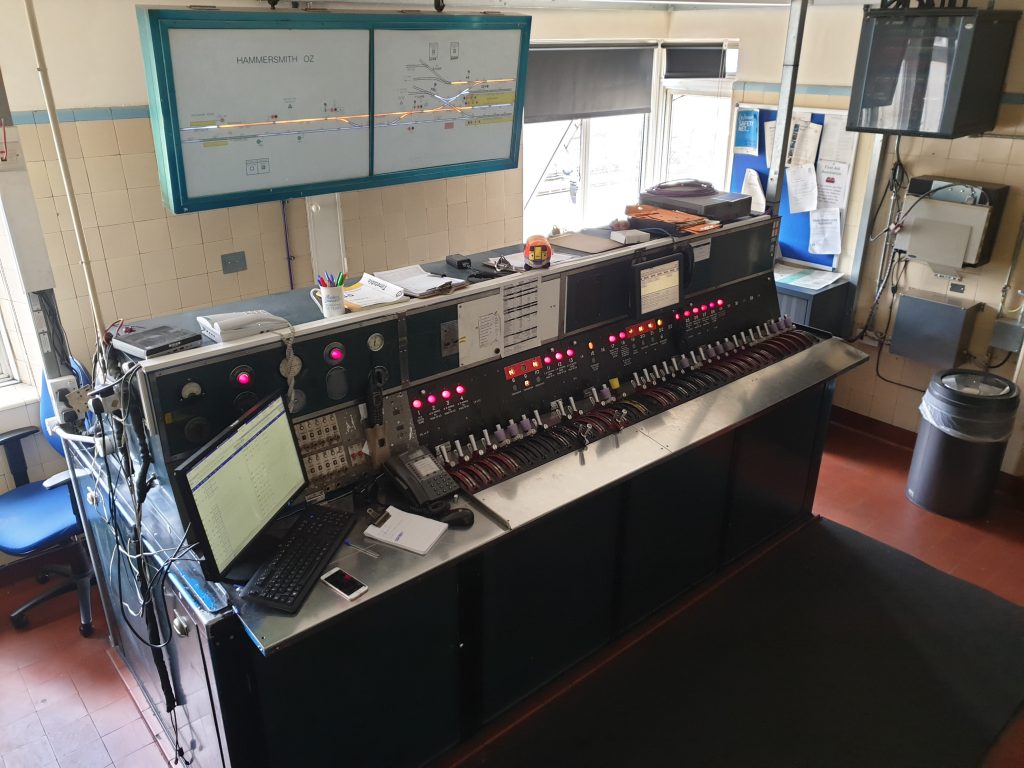
68 Years of Service ~ 1951-2019
Credits & Acknowledgements:
I am grateful to everyone who has assisted me with the compilation of this page. The information contained within has been drawn from a number of sources, including Mike Horne’s Inventory of Signal Cabins—my ‘signal cabin bible’—and a number of internal London Underground sources.
Photographs on this page are all from my own collection, unless otherwise stated. All copyright remains with myself or the original copyright holder, and no images may be reproduced without express prior consent.
Finally, additional special thanks goes to Richard Griffin for the initial inspiration of this page, which grew from his historical pages for the final days of the 1959 stock in January 2000 and then my own #CatchTheD post two years ago.
Featured image: The original Metropolitan District Railway depot at Lillie Bridge remains in use, once again housing District line trains after spending many years as an engineering depot. Three trains of D78 stock and two trains of S7 stock are seen after dark on the 4th May 2015. The central unit is double-ended train 7526/7, the last to survive in use on the Underground. © Tim Easter

